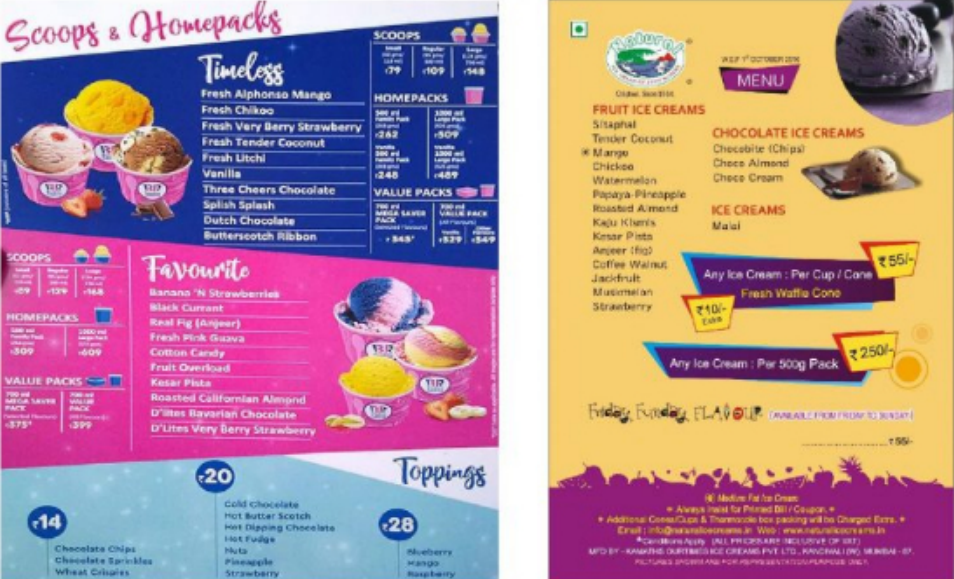Author: Dr Shreekant Vijaykar

A foodie and a self-ordering menu
Recently, a five-year-old story went viral once again about how McDonald’s reported that restaurants that introduced self-ordering kiosks experienced an average of 5-6% increase in sales. This is not just about them. When Chili’s added self-ordering kiosks to its tables a few years ago, the chain too saw a massive 20%increase in dessert sales.
We have seen these self-ordering kiosks and tabs in a few cinemas and restaurants as well, and in principle, self-ordering would seem like a natural solution that provides a win-win. I, for one, being a foodie, find the self-ordering solution delightful. I can choose what I want, at the pace I want, change my order, customize it if required, with no one to judge or look over my shoulder. And what more, there is one less social interaction! For a foodie and an introvert at that ,this is a blessing.
Along with decreased wait times and enhanced order accuracy for the diners, self-ordering kiosks should save money on labour for the restaurant and increase the individual order sizes. Major players like Subway, McDonald’s, Burger King, and Arby’s started experimenting with kiosks as early as 2006. Yet, it has taken over a decade for self-ordering kiosks to come in regular existence. We do not seethe mass adoption of these potential game-changers in the restaurant space even today.
Things have started to change a bit in the last 6 to 9 months, as some of you brave enough to venture out for a meal would have experienced. In the wake of COVID-19 pandemic and related social distancing concerns, the biggest benefit of the self-ordering solution is the safety the technology can provide to customers as well as the restaurant staff. This, among other drivers, has resulted in many restaurants using a combination of a QR-based solution that allows customers to order through an online menu, and a payment solution like Zomato or Pay
A new type of SST
The results of this new type of self-service technology solution are there for everyone to see. Over 25% of restaurant customers in recent research (1) seem to have used a self-ordering solution at a solution within the past three months – up 7% from the last year. About 30% of the customers said they preferred to order from a self-service technology versus a human server.
What is perhaps more interesting, in this study conducted by Tillster, is that 65% of the customers said they would visit a restaurant more often if the self-service technology solution is offered. This is in stark contrast with the past. Only a couple of years ago, a different study had suggested that 78%of customers were less inclined to go to a restaurant that has self-order kiosks. This means that the new SST seems to not only drive better customer experience but also more brand loyalty.
What caused this massive shift?
If one looks closely, two things seem to have happened. One, the new SST solution seems to be more useful. It allows you as a customer to connect to the right menu options, gives the relevant information, and generally works well. I could never give specific customizations in the earlier kiosks, but I can do those now with the online solutions. Two, the new SST is on your own device, and that makes all the difference. Your efforts as a customer are reduced; your choices are private and personal; and you do not have to navigate through a whole new tech, but your own mobile device, which also stores your preferences, and makes it cool to use. In a post-COVID era, I am also more comfortable using my own device than a tab that is passed from hand to hand anyway.
The Two Mantras for SST and Customer Loyalty
I have taken a rather elaborate example to come to these two specific areas that make for a successful SST (self- service technology) in the first place, not just for restaurants, but for any business and industry. Another recent study about retail banking in India (2) suggested that both perceived usefulness and perceived ease of use influence cross-buying and word-of-mouth. Marketers know that these two are critical aspects of customer brand perception and loyalty.
This goes in line with a massive set of research conducted in this area in the last half a dozen years, across regions and domains, all of which point to the fact that usefulness and ease of use, along with control on the technology and enjoyability of the technology have an impact on customer satisfaction and subsequent brand loyalty. Let’s talk about these a little in detail.
Usefulness – As managers and business leaders, it is important to look at whether the SST actually “works”. This may sound strange, but we find that this is a deployment gap in the industry, despite continuous efforts in this direction. A recent COPC In. research (3) suggests that issue resolution is only at 69% in SST, around 10-point lower than traditional channels of customer interaction. As the resolution is low, customers tend to find the SSTs less useful. And although the silver lining is that there is an increasing trend in the resolution over the last 3 years, this becomes the Rubicon in the game of SST. We found that customers who had their issue resolved using SST were 7.5x times more satisfied than those who did not have their issue resolved, Coming to the impact of this on loyalty, consumers who did not have their issue resolved via SST had a Net Promoter Score 5x worse than those who did have their issues resolved. Not just that, but customers who did not have their issue resolved were 15x more likely to say that they would not want to use self-service technology in the future to resolve their issues. What this means is that it is not the SST, but the ability of SST to be useful is what drives brand perception and loyalty of customers, as well as their behavior now and in the future.
Ease of Use – I spoke in my earlier blog about making things simple. Taking that thread forward, one needs to continuously look at ways to make the service journey as effortless as possible. Some of this is related to the tech Itself-fast-loading web pages, secure apps, easy links. But a lot of this is about the design-easy classification of Information, clear procedures, simple and intuitive language, and interactive and fun way to communicate. We have spoken about some of the ways to improving ease of use making the process easy to understand, tracking performance across multiple Interactions, focusing on next-issue avoidance, and mapping the service Journeys to name a few. Let us consider making the process easy to understand a little more in detail. For example, look at the way pricing works in some cases.
Here is an example (4) of pricing for Baskin-Robbins that can leave one wondering for minutes. There are three different sizes of scoops small, regular, large; then there are four types timeless, favorites, and two more types are not in this picture (so the price list is actually double the size of what we see here); then there are different pricing for different toppings. And oh, I forgot. There are different prices for different types of cones too!
Compare that with the menu and price list of Naturals Ice Cream, Agreed that these do not have as many flavors as BR, but the point is about the simplicity of the menu. Any flavor costs the same!
By the way, this is not only about ice creams. This is the same kind of pricing strategy you will see in some other brands, for example, John Jacobs any two pairs of eyeglasses cost the same, while the traditional eyeglass shops and brands continue to give a range. There are merits and challenges in both but you will admit that from a customer’s perspective, it simplifies the process quite a bit without taking away the flexibility (and our experience is that customers do not value the flexibility as much as we think they do, but more about this later).

Looking forward
In summary, we know that the use of SST was much higher in 2020 compared to the previous years (75% compared to 43% according to our recent studies) and will continue to be on the rise. While a part of this is due to the COVID-19 pandemic related changes, a lot of the adoption of SST is also due to the ongoing changing landscape of how customers interact and are willing to interact with brands. This means the way we interact with customers needs to keep evolving too, and it is imperative for marketers and business leaders to constantly focus on this. A useful and easy to use SST will improve customer satisfaction and add brand loyalty for you, as many studies have shown us, while a cumbersome and buiky system will only add to your costs. While the new QR-based self- ordering seems to enjoy the patronage and Improve customer brand perception for restaurants, the earlier self- ordering kiosks and tablets seem abandoned and unused a severe reminder that when It comes to tech adoption and its impact on brand loyalty, the usefulness and ease of use of the solution triumph the technological.
